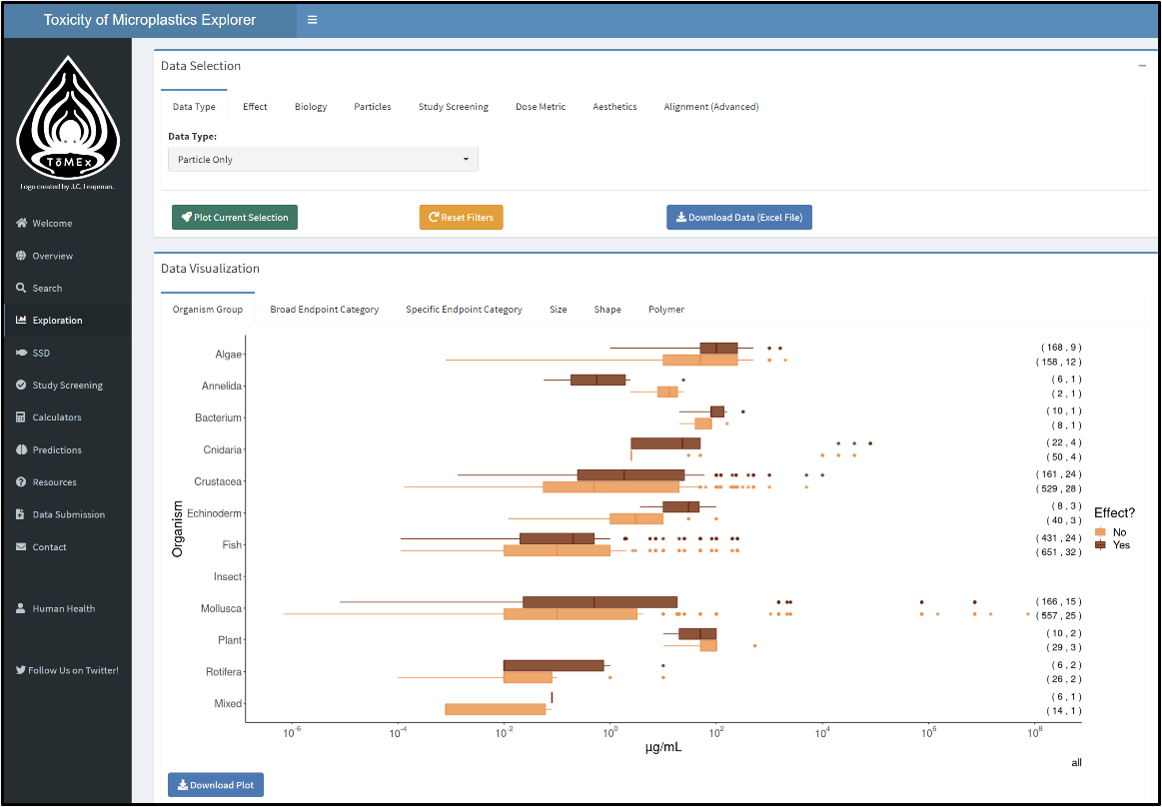Special journal issue highlights new scientific tools to support microplastics management

An initial set of scientific products and health thresholds that could form the technical underpinnings for how California protects aquatic life and humans from exposure to microplastics pollution is featured in a newly published special issue of the journal Microplastics and Nanoplastics.
The special journal issue, made up of 10 open-access articles and published in July, reflects early, international scientific consensus on a five-tiered management framework that explains the relationship between different microplastics levels measured in the environment and corresponding actions that managers could take based on the degree to which they want to ensure aquatic organisms are protected from microplastics toxicity.
Embedded in the framework is a set of preliminary thresholds for aquatic life that define for environmental managers the exposure levels at which microplastics can be expected to trigger adverse biological effects. (Researchers concluded that the toxicology data needed to derive corresponding thresholds for human health do not yet exist.)
The microplastics framework and thresholds are the culmination of a year of deliberations by leading microplastics experts that were facilitated by SCCWRP. SCCWRP kicked off the international deliberations in fall 2020 by hosting the multi-part Microplastics Health Effects Workshop; the special journal issue reflects the science that evolved from this workshop.
California is leading the nation in developing comprehensive, science-based management strategies for controlling the microplastic contamination in aquatic environments. The ongoing work is spurred by 2018 passage of Senate Bill 1422 and Senate Bill 1263, which call on California to combat microplastics pollution in drinking water and the coastal ocean, respectively.
Already, the California Ocean Protection Council has codified supporting the continued development of microplastics thresholds into the agency’s statewide microplastics management strategy for the coastal ocean, which was published in February.
The California Environmental Laboratory Accreditation Program (ELAP), meanwhile, is working to develop standard operating protocols (SOPs) and proficiency standards that will pave the way for laboratories across California to begin measuring microplastics levels in drinking water. A pilot study also is being conducted to document levels of microplastics in drinking water.
Eight of the 10 articles in the special journal issue were co-authored by SCCWRP. SCCWRP’s Dr. Stephen Weisberg served as the lead guest editor of the special issue.
Also featured in the special issue is the development of a toxicity database that was central to the development and calculation of thresholds. Developed by SCCWRP, the Toxicity of Microplastics Explorer (ToMEx) provided the toxicity data necessary to derive the numerical values for each threshold.
ToMEx is a public, web-based repository of toxicity data from published microplastics health effects studies; an accompanying R shiny web application has been integrated into ToMEx that enables researchers to conduct data analyses and derive thresholds where users may easily customize the data used and the parameter settings to their own specifications. More data will be added to ToMEx as future microplastics toxicity studies are completed.
The proposed microplastics management framework described in the special journal issue consists of five tiers that assign progressively higher confidence levels to the likelihood of microplastics toxicity based on exposure level. The transitions between tiers are designated by preliminary numerical thresholds for microplastics levels that correspond to progressively more aggressive management actions, ranging from enhanced monitoring at one end of the spectrum, to pollution control measures at the other end.
Finally, the special journal issue chronicles the knowledge gaps that researchers identified in microplastics health effects data that limit their ability to derive health-based thresholds. Researchers emphasized that the initial thresholds will need to be updated as more studies are published that use more environmentally relevant conditions, particle types and experimental designs to capture robust dose-response relationships.
For more information, contact Dr. Leah Thornton Hampton.
More news related to: Emerging Contaminants, Top News, Trash Pollution